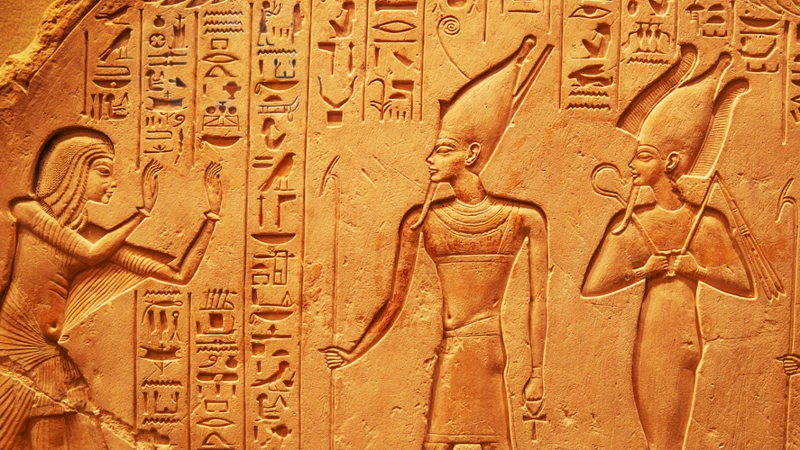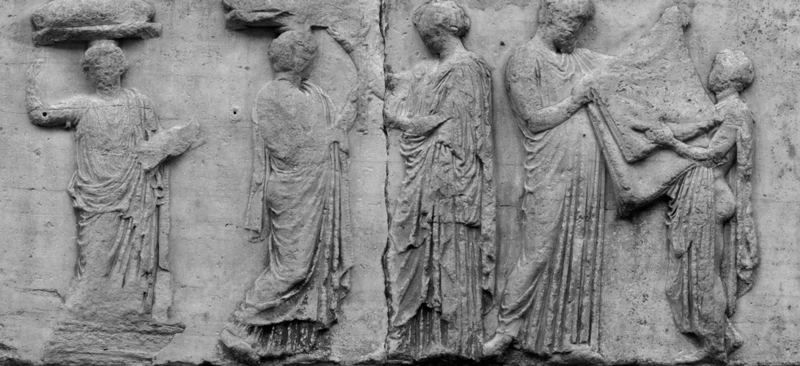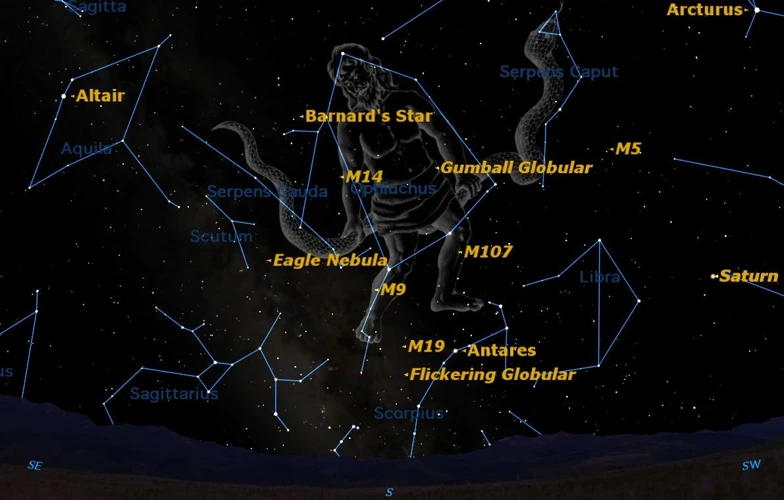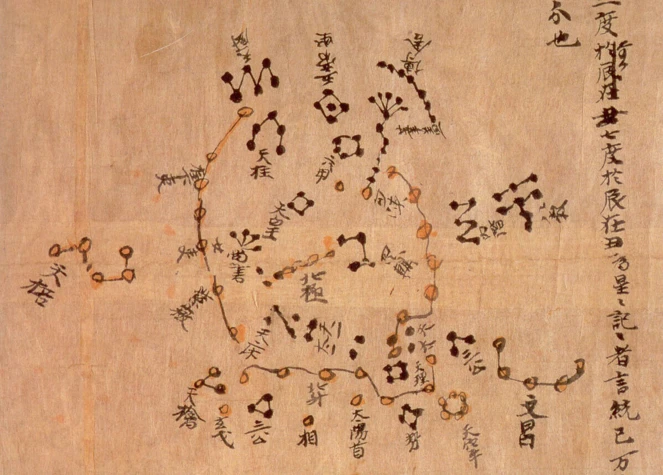For centuries, ancient civilizations have looked up at the night sky in awe, searching for meaning and connection among the stars above. Their fascination with the cosmos led to the development of starlore, a system that combines mythology, astronomy, and philosophy to understand the celestial realm. From the mystical connections of Ancient Egypt to the gods and constellations of Ancient Greece, from the intricate star charts of Mesoamerican civilizations to the profound insights of Indian astrology and the rich symbolism of Chinese starlore, the influence of these ancient cultures on our understanding of the stars is undeniable. In this article, we will explore the captivating world of starlore, delving into the intricate details that connect ancient civilizations with the celestial wonders that have intrigued humanity for millennia. So, let us embark on a journey through time and space to uncover the profound influence of ancient civilizations on starlore.
Ancient Egypt

Ancient Egypt, known for its rich mythology and awe-inspiring monuments, also had a profound influence on starlore. The ancient Egyptians believed that the stars were powerful beings and that they controlled the various aspects of life on Earth. Mythical connections played a significant role in their understanding of the stars. The goddess Nut, for example, was associated with the night sky and was believed to swallow the sun at dusk and give birth to it again at dawn. The god Osiris was connected with the constellation Orion, while the goddess Hathor was linked to the star Sirius, which was an essential marker for the annual flooding of the Nile. Additionally, astronomy and cosmology were integral to Egyptian society. The alignment of the pyramids with certain stars, such as the three pyramids of Giza aligning with the belt of Orion, showcased the Egyptians’ advanced astronomical knowledge. They also developed a calendar based on the yearly rising of the star Sirius, known as the Sothic calendar. The ancient Egyptians’ celestial observations influenced various aspects of their culture and understanding of the world. For a deeper understanding of astrology in ancient cultures, you can explore the article on /astrology-ancient-cultures/.
1.1 Mythical Connections
In ancient Egypt, the concept of mythical connections with the stars played a significant role in their understanding of starlore. The ancient Egyptians believed that the stars were not just celestial bodies but powerful beings with divine significance. They associated certain gods and goddesses with specific constellations and stars, creating a rich mythology intertwined with the night sky. For example, the goddess Nut was linked to the night sky and was believed to swallow the sun at dusk, only to give birth to it again at dawn. Nut’s body arching over the Earth was seen as the celestial vault, creating a protective canopy that represented the cosmos itself. The god Osiris was associated with the constellation Orion, which was believed to be his celestial form. This connection symbolized the journey of Osiris through the afterlife, mirroring the cyclical nature of Orion’s appearance and disappearance in the night sky. Additionally, the goddess Hathor was linked to the star Sirius, the brightest star in the night sky. Known as the “Giver of Life,” Hathor was associated with the annual flooding of the Nile, which signaled fertility and abundance. The rising of Sirius heralded the imminent flooding and was of utmost importance to agricultural practices in ancient Egypt. These mythical connections between gods, goddesses, and the stars not only added depth to the Egyptian belief system but also influenced various aspects of their culture and day-to-day lives. For further exploration of the impact of celestial observations on ancient navigation, you can refer to the article on /impact-celestial-observations-ancient-navigation/.
1.2 Astronomy and Cosmology
Astronomy and cosmology held immense significance in ancient Egypt and were deeply intertwined with their culture and religious beliefs. The ancient Egyptians were meticulous observers of the night sky, studying the movements and patterns of celestial bodies to gain insight into the workings of the universe. They believed that the stars held immense power and influence over their daily lives. The alignment of the pyramids with specific stars, such as the North Star, showcased their advanced understanding of astronomy and their ability to align monumental structures with celestial bodies. The Egyptians also developed a calendar based on the yearly rising and setting of certain stars, most notably Sirius, known as the Sothic calendar. This calendar played a vital role in their agricultural practices, as the rising of Sirius signaled the annual flooding of the Nile River, which was crucial for their agricultural productivity. The Egyptians believed in a complex cosmology where the gods and goddesses resided in different regions of the sky. The sun god Ra, for example, was believed to journey across the sky during the day and then traverse through the underworld at night, only to be reborn at dawn. This cycle of death and rebirth mirrored the movement of the sun, symbolizing the eternal cycle of life. The Egyptians’ understanding of astronomy and cosmology not only shaped their religious practices but also influenced their agricultural and societal structures. To delve deeper into the fascinating evolution of astrological beliefs, you can explore the article on /evolution-of-astrological-beliefs/.
Ancient Greece

Ancient Greece, renowned for its contributions to philosophy and the arts, also had a significant influence on starlore. Greek mythology and its pantheon of gods and goddesses played a central role in connecting celestial phenomena with earthly events. Gods such as Zeus, Athena, and Poseidon had their counterparts among the constellations, with stories woven around their mythological identities. For example, Zeus was associated with the constellation Gemini, representing the twin brothers Castor and Pollux. Greek philosophers, such as Pythagoras and Plato, delved into the study of the heavens and their relation to human existence. Astrology, the belief that celestial bodies influenced human lives and personalities, emerged during this period. The Greek philosopher Thales was known for his celestial observations and his belief that the stars influenced human affairs. Indeed, Greek starlore shaped not only their understanding of the cosmos but also their beliefs about the interconnectedness of the divine and human worlds. If you’re interested in exploring the evolution of astrological beliefs, you can find more information in the article on /evolution-of-astrological-beliefs/.
2.1 Gods and Constellations
In Ancient Greece, the gods and constellations played a significant role in their starlore. The Greeks attributed divine origins to the constellations, seeing them as celestial representations of their gods and heroes. The mythological stories surrounding these constellations added a layer of meaning and fascination to their understanding of the stars. For example, the constellation Orion was associated with the legendary hunter Orion, who was known for his strength and prowess. The constellation Ursa Major represented the nymph Callisto, who was transformed into a bear by the goddess Hera. Another well-known constellation, Cassiopeia, was named after a queen who was punished by the gods for her vanity. These connections between the gods and constellations not only provided the Greeks with captivating tales but also influenced their cultural beliefs and practices. Greek astronomers and mathematicians like Ptolemy further classified and studied these constellations, creating intricate star charts and contributing to the development of the field of astronomy. The intertwined relationship between the gods and constellations in Ancient Greece highlights their profound influence on the understanding and interpretation of the celestial realm. For more information on the impact of celestial observations on ancient navigation, you can explore the article on /impact-celestial-observations-ancient-navigation/.
2.2 Astrology and Philosophy
Astrology and philosophy were intricately linked in Ancient Greece, shaping the beliefs and understanding of the cosmos. The Greeks believed that the positions and movements of celestial bodies had a direct influence on human affairs and character traits. This belief formed the foundation of astrology, which sought to interpret these cosmic influences and predict future events. Greek philosophers such as Plato and Aristotle studied astrology as a means to gain insight into the nature of the universe and human existence. Plato, in his dialogue “Timaeus,” discussed the concept of a divine Craftsman who used the movements of the stars and planets to create and govern the world. Aristotle, on the other hand, emphasized the importance of observing celestial phenomena to understand natural phenomena on Earth. Astrological beliefs were intertwined with philosophical doctrines, such as the idea of a harmonious celestial order reflecting a harmonious human soul. The concept of the Zodiac, which divided the sky into twelve equal parts and assigned each part to a specific constellation, emerged during this period. Each constellation was believed to have a unique influence on individuals born under its sign, further connecting astrology with philosophical ideas of individuality and destiny. The synthesis of astrology and philosophy in Ancient Greece laid the groundwork for the evolution of astrological beliefs throughout history. To learn more about the impact of celestial observations on ancient navigation, you can refer to the article on /impact-celestial-observations-ancient-navigation/.
Mesoamerican Civilizations

Mesoamerican civilizations, such as the Maya and the Aztecs, had a deep reverence for the stars and celestial phenomena, which influenced their starlore. The Mayans developed a complex astronomical system and had a deep understanding of the movements of celestial bodies. They built observatories and intricate calendars based on their astronomical observations. The Mayan Starlore, rich with mythological connections, associated various constellations and celestial events with deities and cosmic forces. For example, the Pleiades cluster was believed to represent the seven Macaw gods, and a celestial event known as the zenith passage was considered pivotal for agricultural cycles. The Aztecs, on the other hand, focused on the sun as a central celestial deity and developed a calendar based on its movements. Aztec astronomy was deeply intertwined with religious beliefs and rituals, and they used celestial observations for both practical and spiritual purposes. The influence of Mesoamerican civilizations on starlore is vast, and their understanding of the cosmos and its connection to their society is truly remarkable. For a deeper understanding of how celestial observations impacted ancient navigation, you can explore the article on /impact-celestial-observations-ancient-navigation/.
3.1 Mayan Starlore
Mayan Starlore holds a fascinating place in the realm of ancient civilizations’ celestial knowledge. The Mayans, renowned for their advanced understanding of astronomy, developed a complex and precise system of observing and interpreting the movements of celestial bodies. They believed that the cosmos had a significant influence on human affairs and used their astronomical knowledge to govern various aspects of their lives, including agriculture, governance, and religious ceremonies. One of the most remarkable features of Mayan Starlore is their creation of intricate celestial calendars. The Mayans had several different calendars that tracked the cycles of the sun, moon, and other celestial bodies. The Long Count calendar, which spanned over 5,000 years, marked important astronomical events and served as a chronological record of the Mayan civilization. Another calendar, known as the Tzolk’in, focused on the 260-day cycle and was associated with divination and prophecy. Additionally, the Mayans assigned symbolic representations to celestial bodies and used their alignments to determine auspicious times for various activities. The Temple of the Inscriptions in Palenque, for instance, is aligned with the path of Venus, signifying the importance of this planet in Mayan cosmology. Exploring the intricacies of Mayan Starlore offers a deep understanding of their connection with the heavens and the profound role astronomy played in Mayan culture and society.
3.2 Aztec Astronomy
Aztec civilization, known for its advanced understanding of astronomy, had a profound impact on the development of starlore. Aztec astronomy was closely intertwined with their religious beliefs and had practical applications in agriculture and timekeeping. The Aztecs closely observed celestial bodies and created complex calendars that guided their agricultural activities and religious ceremonies. Among their notable astronomical achievements were the creation of a solar calendar called the Xiuhpohualli, which consisted of 365 days, and a sacred calendar known as the Tonalpohualli, which had 260 days. These calendars were combined to create a comprehensive system that accounted for both solar and ritual cycles. The Aztecs built observatories, known as “teocallis,” which were used for studying the movements of celestial bodies. They tracked the paths of the Sun, Moon, and various planets, and associated them with deities and events in their mythology. For instance, the planet Venus, known as Tlahuizcalpantecuhtli, was associated with the feathered serpent god Quetzalcoatl. The careful observations of the Aztecs allowed them to predict astronomical events such as eclipses with remarkable accuracy. The precision and knowledge demonstrated by Aztec astronomers were highly respected and influenced other Mesoamerican civilizations. To understand more about the impact of celestial observations on ancient navigation, you can read this informative article: /impact-celestial-observations-ancient-navigation/.
Indian Astrology

Indian astrology, also known as Vedic astrology, has a rich and ancient tradition that dates back thousands of years. Its foundational texts, such as the Vedas and the Puranas, provide a comprehensive understanding of the cosmos and its influence on human lives. In Vedic astrology, the position of celestial bodies at the time of a person’s birth is believed to shape their personality, destiny, and life events. One of the fundamental elements of Indian astrology is the concept of Nakshatras, which are 27 lunar mansions that divide the zodiac into specific segments. Each Nakshatra is associated with unique characteristics and attributes, allowing astrologers to interpret and predict the influence of these celestial bodies on an individual’s life. The zodiac signs, or Rashis, also play a significant role in Indian astrology. These 12 signs are based on the position of the sun at the time of birth and provide further insights into an individual’s traits and behaviors. The intricate connections between the Nakshatras, zodiac signs, and planetary movements form the basis of Indian astrology. To explore more about the fascinating evolution of astrological beliefs, the article on /evolution-of-astrological-beliefs/ can provide valuable insights.
4.1 Vedic Astrology
Vedic Astrology, also known as Jyotish, is an ancient astrological system that originated in the Indian subcontinent. It is considered one of the oldest astrological traditions in the world and holds great significance in Hindu culture. Vedic Astrology is based on the Vedas, which are ancient sacred texts of wisdom and knowledge. The Vedas contain valuable information about the movement of celestial bodies and their impact on human affairs. According to Vedic Astrology, the positions of the planets at the time of a person’s birth can provide insights into their personality traits, relationships, and even life events. The birth chart, also known as the Kundali, is a fundamental component of Vedic Astrology. It is a map of the celestial placements at the exact moment of an individual’s birth. Vedic Astrology takes into account nine planetary bodies, including the Sun, Moon, Mars, Venus, Jupiter, Saturn, Mercury, Rahu, and Ketu. Each planet is believed to possess unique energies and influences that shape different aspects of human life. Vedic Astrology also considers the twelve zodiac signs, known as Rashis, and twenty-seven lunar mansions, known as Nakshatras, for more precise astrological predictions. Practitioners of Vedic Astrology study the birth chart to understand a person’s destiny, strengths, weaknesses, and potential challenges. It is used for a variety of purposes, including compatibility analysis for partnerships and marriages, career guidance, and even determining auspicious times for important life events. The wisdom and accuracy of Vedic Astrology continue to be revered and followed by millions of people around the world. For a deeper exploration of the evolution of astrological beliefs, you can visit the article on /evolution-of-astrological-beliefs/.
4.2 Nakshatras and Zodiac
The ancient Indian astrological system, known as Vedic Astrology, incorporates the concept of Nakshatras, which are lunar mansions or star clusters along the elliptic. The Nakshatras are divided into 27 segments, and each segment is associated with a specific deity or ruling power. These lunar mansions played a crucial role in determining a person’s characteristics, behavior, and destiny. The Nakshatras are further interconnected with the Zodiac, which consists of 12 astrological signs. Each sign corresponds to a specific alignment of stars and planets, influencing different aspects of an individual’s life. The Zodiac and Nakshatras work together to provide a comprehensive understanding of an individual’s personality, life path, and compatibility with others. The Nakshatras and Zodiac system continue to be significant in contemporary Indian astrology, guiding individuals in various facets of life, including career choices, relationships, and spiritual growth. Understanding the intricate interplay between Nakshatras and the Zodiac is essential for practitioners of Vedic Astrology and those seeking to explore the depths of this ancient wisdom.
Chinese Starlore
Chinese starlore is a fascinating aspect of ancient Chinese culture, steeped in rich mythology and symbolism. Central to Chinese starlore is the concept of Yin and Yang, representing the balance and interconnectedness of opposing forces in the universe. The Chinese people believed that the stars were divine entities that held great significance in their daily lives. The Four Symbols, which are the Azure Dragon, the Vermilion Bird, the White Tiger, and the Black Tortoise, serve as important celestial symbols representing various aspects of life and nature. These symbols are associated with specific constellations and were believed to bring fortune and protection. Additionally, the Chinese zodiac, consisting of twelve animal signs, is deeply intertwined with Chinese starlore. Each animal sign is associated with specific constellations and holds different characteristics and influences over individuals born under them. The influence of Chinese starlore can be seen in various aspects of Chinese culture, including art, literature, and even feng shui practices. Discover more about the historical impact of celestial observations on ancient navigation in the article on /impact-celestial-observations-ancient-navigation/.
5.1 Yin and Yang
The concept of Yin and Yang is a fundamental aspect of Chinese starlore and philosophy. Yin and Yang are opposing yet complementary forces that exist in the universe. Yin represents feminine energy, darkness, passivity, and coolness, while Yang represents masculine energy, light, activity, and warmth. In the realm of stars, Yin and Yang are reflected in the lunar cycles. The moon itself is associated with Yin energy, with its gentle glow and changing phases symbolizing the cyclical nature of life. This concept of duality extends to the constellations as well. For example, the Big Dipper, known as the Northern Ladle in Chinese folklore, is seen as a symbol of Yin and Yang. It is composed of two sets of three stars, representing the harmonious interplay between opposing energies. The practice of observing the night sky and understanding the movement of the stars in relation to Yin and Yang played a significant role in Chinese astrology and cosmology. The balance between Yin and Yang and its application to celestial observations provided insights into the harmony and interconnectedness of all things. It is fascinating to see how the concept of Yin and Yang influenced not only Chinese starlore but also various aspects of Chinese culture and philosophy.
5.2 The Four Symbols
In Chinese starlore, the concept of the Four Symbols holds great significance. Also known as the Four Guardians or Four Celestial Emblems, these symbols represent four mythological creatures: the Azure Dragon of the East, the Vermilion Bird of the South, the White Tiger of the West, and the Black Tortoise of the North. Each symbol is associated with a cardinal direction, a season, and specific qualities.
The Azure Dragon, also referred to as the Blue-Green Dragon, is connected to the East and represents spring. It is associated with power, vitality, and growth. In Chinese mythology, the Azure Dragon is often depicted as a benevolent creature associated with good fortune and protection.
The Vermilion Bird, sometimes known as the Red Bird or Phoenix, is associated with the South and represents summer. It is associated with fire, passion, and prosperity. In Chinese mythology, the Vermilion Bird is regarded as a symbol of rebirth and resurrection, often representing beauty, grace, and transcendence.
The White Tiger is linked to the West and represents autumn. It symbolizes strength, courage, and protection. In Chinese folklore, the White Tiger is often depicted as a fierce and powerful creature, guarding against evil spirits and protecting the boundaries of the mortal world.
The Black Tortoise, also known as the Black Warrior or Black Snake, is associated with the North and represents winter. It signifies wisdom, longevity, and endurance. In Chinese mythology, the Black Tortoise is often depicted as a divine creature capable of spiritual transformation, embodying the cycle of life and death.
These Four Symbols are not only found in Chinese starlore but also play significant roles in various aspects of Chinese culture, including astrology, art, architecture, and even martial arts. They are considered auspicious and are frequently used to symbolize harmony and balance. The Four Symbols are emblematic of the deep connection between the celestial realm and human existence in Chinese cosmology.
To understand the evolution of astrological beliefs in different ancient civilizations, you can refer to the informative article on /evolution-of-astrological-beliefs/.
Conclusion
In conclusion, the influence of ancient civilizations on starlore is profound and far-reaching. From the mythical connections of Ancient Egypt to the gods and constellations of Ancient Greece, from the intricate star charts of Mesoamerican civilizations to the profound insights of Indian astrology and the rich symbolism of Chinese starlore, these ancient cultures have shaped our understanding of the stars and their significance in our lives. They recognized the power and beauty of the celestial realm and sought to find meaning and guidance within it. The contributions of these ancient civilizations continue to resonate in modern astronomy, astrology, and our overall fascination with the cosmos. The knowledge passed down through generations has laid the foundation for our current understanding of the universe and serves as a reminder of our enduring curiosity and connection to the stars. The impact of celestial observations on ancient navigation and the evolution of astrological beliefs is undeniable, as they continue to shape our perceptions and inspire further exploration and study. As we gaze up at the night sky, we are reminded of the vast cultural legacies left by these ancient civilizations, and how their influence continues to captivate and inspire us today.
Frequently Asked Questions
1. Why were ancient civilizations fascinated with the stars?
Ancient civilizations were fascinated with the stars because they provided a sense of wonder and mystery. The stars served as celestial markers, guiding navigation, determining seasons, and influencing agricultural practices. Many ancient cultures believed that the stars were divine beings and that their movements held significant meaning.
2. How did ancient Egyptians incorporate starlore into their mythology?
The ancient Egyptians integrated starlore into their mythology through the associations between gods and specific constellations or stars. For example, Osiris was linked with the constellation Orion, and Hathor was connected with the star Sirius. These mythical connections helped explain astronomical phenomena and showcased the significance of the stars in ancient Egyptian culture.
3. What were some key astronomical achievements of ancient Greece?
Ancient Greece made significant strides in astronomy, with contributions from astronomers like Hipparchus and Ptolemy. They developed intricate star maps, observed and measured celestial movements, and proposed the geocentric model of the universe. Greek astronomers also named many of the constellations we still recognize today.
4. How did astrology intersect with philosophy in ancient Greece?
Astrology and philosophy intertwined in ancient Greek culture as philosophers sought to understand the relationship between celestial bodies and human behavior. They believed that the positions of the stars and planets influenced the fate and character of individuals, leading to the development of philosophical ideas surrounding determinism and free will.
5. What were the main astronomical achievements of Mesoamerican civilizations?
Mesoamerican civilizations, such as the Mayans and Aztecs, developed sophisticated astronomical calendars and observatories. They accurately predicted astronomical events like eclipses and understood the movements of celestial bodies. These astronomical achievements were closely tied to religious and agricultural practices.
6. How did Indian astrology evolve in ancient times?
In ancient India, astrology evolved into a complex system known as Vedic astrology. It originated from the Vedas, ancient Hindu scriptures, and emphasized the influence of planetary positions on an individual’s life and destiny. Indian astrology developed alongside astronomy and was highly regarded in society.
7. What role do Nakshatras play in Indian astrology?
Nakshatras are lunar mansions or star clusters that play a crucial role in Indian astrology. They divide the zodiac into 27 sectors, each associated with a specific star or constellation. Nakshatras are believed to influence various aspects of a person’s life, including character traits, compatibility, and the timing of events.
8. How does Chinese starlore connect with the concept of Yin and Yang?
Chinese starlore is closely intertwined with the philosophical concept of Yin and Yang. The stars were classified into Yin (feminine, passive) and Yang (masculine, active) categories. This classification system helped the Chinese understand the dynamic balance and interplay between opposing forces in the universe.
9. What are the Four Symbols in Chinese starlore?
The Four Symbols, also known as the Four Celestial Guardians, are four mythological creatures in Chinese starlore that correspond to the four cardinal directions. They are the Azure Dragon of the East, the Vermilion Bird of the South, the White Tiger of the West, and the Black Tortoise of the North. These symbols represent various aspects of life, including seasons, elements, and virtues.
10. What can we learn from the influence of ancient civilizations on starlore?
The influence of ancient civilizations on starlore highlights the universal human fascination with the night sky. It showcases the interconnectedness of different cultures and their shared desire to understand the cosmos. Exploring the rich history of starlore can deepen our appreciation for the cultural, scientific, and philosophical advancements made by our ancestors.








